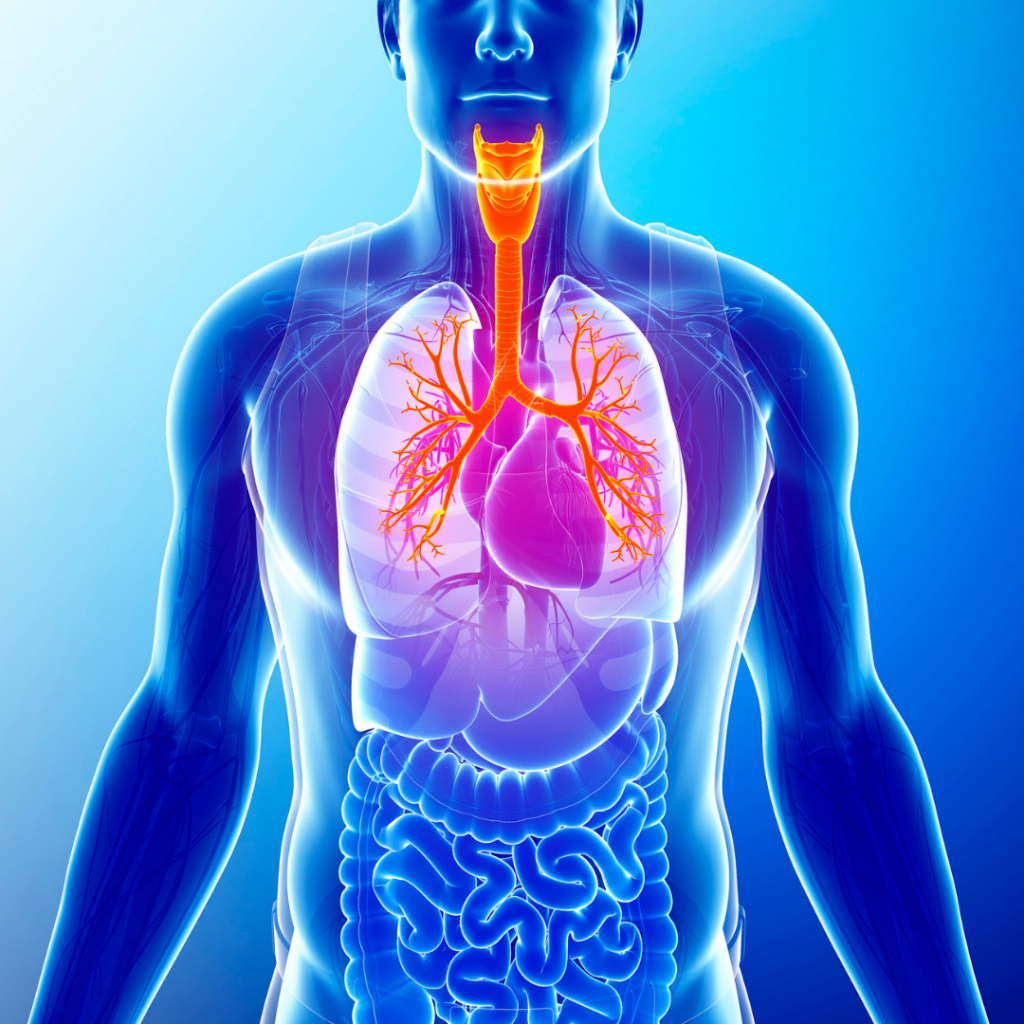- Fast results
- 4,000+ locations
- 4.8 star rating
Need Help? (888) GET LABS

People value lung function now more than ever.
Since the COVID-19 pandemic took a huge toll on the worldwide population, the attention for lung health has been widened. Hence, for those experiencing breathing issues, it comes as no surprise to wonder if blood tests are necessary for diagnosis.
Simply put, yes, some lung problems can be detected by blood tests, but it is mainly regarded as supplemental.
While some people assume that respiratory health assessment is exclusively done through x-ray, spirometry, and CT-scan, other lab tests are crucial in diagnosing diseases.
In the case of blood tests, it aids in evaluating the overall state of your lung functions.
Lung infections that encompass bacterial and viral transmission are screened via blood tests. So it’s only a matter of which blood test is appropriate for your symptoms.
With that, it is imperative to understand how these blood tests work, how much damage infections can cause, and preventive measures to protect your lungs.

The blood oxygen level test is a standard lab procedure used to assess lung function.
On the other hand, some blood tests are designed for general health assessment. Hence, they are essential in monitoring your lung health—other blood tests screen for specific markers or pathogens concerning respiratory infections.
Here are some of the blood tests used to evaluate proper lung function.
The purpose of a blood oxygen level test or sometimes referred to as gas analysis, is to determine the levels of respiratory gases (oxygen and carbon dioxide) in the blood. In addition, it measures the pH level, saturation, and partial pressure of both gases.
If the result shows an imbalance in oxygen intake and carbon dioxide removal, it indicates that your lung function is compromised.
A medical technician will draw blood from your radial artery located in the wrist to perform this test. Hence, you might encounter the term arterial blood gases (ABG) test instead of blood oxygen level test. Then, the blood sample is analyzed in the laboratory.
A complete blood count (CBC) is ordered to measure blood cells. The number of red blood cells (RBC) or erythrocytes, white blood cells (WBC) or leukocytes, and platelets are measured with this test.
But if the concern is a lung infection, you can go for a CBC without differential wherein the test focus more on counting WBCs.
For example, if you have symptoms of pneumonia, a blood test to confirm the infection is essential, along with a chest X-ray, sputum test, and pulse oximetry.
The C-reactive protein (CRP) test is another blood test that determines reduced lung function. In addition, CRP is a marker for inflammation.
According to research, CRP values that are moderately high can be found among patients with viral upper respiratory tract infections.
Furthermore, in a recent study by the Amsterdam Public Health Research Institute, CRP values can potentially be used as a point-of-care tool to avoid the over-prescription of antibiotics to patients with lower respiratory tract infections in elderly homes.
A QFT test is an alternative to a tuberculin skin test in detecting the pathogen that causes tuberculosis – Mycobacterium tuberculosis. This blood test uses different specialized tubes for blood collection.
Once the blood samples are collected, they are incubated in the lab then exposed to highly specific TB antigens. The result of the exposure determines the infection and infers the development of the highly contagious tuberculosis.
There are different types of lung diseases and disorders. While they are caused by various pathogens and external or internal conditions, they have several symptoms in common. However, with some respiratory illnesses, these symptoms can be more severe.
Here are some of the common symptoms of lung problems.
Your lung health is not simply determined based on proper functions – although it is primarily the first reference. Instead, the risk and real-time development of infections and disorders pretty much sums up the condition of your lungs.
Here are some of the most common lung diseases/disorders to watch out for.

Chronic obstructive pulmonary disease (COPD) is a group of pulmonary diseases characterized by an obstructed airflow causing breathing problems and lung dysfunctions.
COPD comes in two types: emphysema and chronic bronchitis.
Emphysema involves damages in the alveoli or air sacs. One hallmark symptom of this COPD is shortness of breath. On the other hand, chronic bronchitis is the inflammation of the bronchial tube linings. This is due to repeated irritation leading to severe coughing episodes and mucus buildup.
Smokers are at high risk of developing COPD as well as those who are exposed to air pollution or other airborne irritants. To prevent COPD, quitting smoking is a crucial step.
Pneumonia can be a bacterial or viral infection affecting the alveoli. As the infection progresses and the immune system wards off the pathogen (disease-causing microbe), the alveoli are filled with pus, making it difficult to breathe.
Tuberculosis is a lung infection caused by a strain of bacteria called Mycobacterium tuberculosis. Although the bacteria primarily targets the lungs, it can also affect other vital organs.
If you contracted tuberculosis, you would experience high fever, fatigue, inflammation near the neck, loss of appetite, and non-stop coughing, mainly containing blood as the infection progresses.
COVID-19 is a viral infection particularly caused by the SARS-CoV-2 virus or simply referred to as coronavirus.
It is recognized as highly contagious and a fatal infection targeting the lungs, which is why its most notable symptoms include shortness of breath, fever, loss of sense of taste and smell, and body aches.
Asthma is another serious lung disease triggered by irritants that block the airway and cause inflammation in the bronchial tubes. It ranges from mild to severe symptoms like chest pain, shortness of breath, coughing, and wheezing characterized by a whistling sound.
Cystic fibrosis is a genetic disorder that causes acute damage in the lungs and some digestive system organs like the intestines or pancreas.
A person diagnosed with this disorder produces thick, sticky mucus that causes dysfunctions in the affected organ.
The mucus blocks the airways within the lungs, thus causing persistent cough, wheezing, and shortness of breath.
Although cystic fibrosis is life-threatening and currently has no cure, it can be managed, especially if diagnosed early.
Pulmonary edema is when your lungs accumulate an excessive amount of fluid.
This illness can be caused by other medical conditions such as congenital heart disease, kidney failure, and pneumonia.
Likewise, it can be triggered by external factors that put too much pressure on the lungs and even on the heart. These include high altitude exposure and severe physical trauma.
Yes, you can monitor your lung functions at home using a device called Peak Flow Meter. However, it is best to consult with your doctor first so you can synchronize your home monitoring with that of the laboratory.
So, what exactly is a peak flow meter?
Simply put, a peak flow meter measures airflow from the lungs, precisely measuring the greatest airflow rate you can generate in a fast blow. Peak flow meters are widely available in many drug stores.
The testing mechanism is simple. You just breathe into the mouthpiece with your full lung capacity as fast as you can. While doing this, you will notice that the marker moves along the numbered scale. Do these steps repeatedly for about three times and chart the highest calculation.
Keep a record of the results so you can show them to your doctor.
Peak flow meters are particularly helpful for those who have asthma and lung diseases that have management plans. Your peak flow rates determine the level of treatment you need.

If the lung damage is too severe, it is generally irreversible. Likewise, scarring in the lungs is permanent, and there’s no medical procedure that can completely erase the scars.
Hence, you can expect that some of your routine activities will be limited, especially if it could put pressure on your lungs.
Nevertheless, you can continue to live a good life even with lungs that don’t function at an optimum level.
Your primary goal is not to add further damage and adapt to a lifestyle that doesn’t trigger severe symptoms.
For example, most people who have lung damage are chronic smokers. Hence, continuing the habit can just lower your lung capacity at a faster rate – or worse, it can be the cause of your death.
Severely damaged lungs may not go back to their healthy state, but you can always keep them functioning at an acceptable level using natural means.
For starters, stay away from choices that could worsen your condition.
Next, check out an alternative lifestyle that promotes lung healing because, despite the medical inadequacies to regain your previous lung health, organic foods and drinks can still be beneficial for your respiratory system.
Healthy organic foods improve your health and wellness. And this doesn’t exempt your lung health. So, here are some foods you can include in your next grocery list.
Stay away from foods that could irritate your airways. That’s the general rule of thumb if you don’t want to trigger an existing lung condition or a flare-up. Moreover, stir clear from unhealthy foods considering their adverse effects on your body.
Soothing your airways and reducing lung inflammation can be done by having the right drink.
Making a habit of intaking natural foods and beverages containing antioxidants and anti-inflammatory properties helps cleanse your lungs. This is particularly helpful for recovering smokers.
Check out some of the recommended drinks that allow you to clear your lungs.
Drinking green tea has a lot of health benefits. One of which is that it helps unblock your airways and reduce inflammation in the respiratory system.
Green tea has plenty of polyphenols that help decrease irritation. In addition, according to research, drinking green tea at least twice a day lowers the risk for COPD.
If you have consumed peppermint tea before, you can attest that it can be very calming, making your trachea (airway) and esophagus more relaxed. Aside from these sensations, peppermint tea is effective in preventing respiratory tract infections.
You can consume honey in different ways. But when it comes to cleansing your lungs, the best way to take it in is mixing the honey with hot water. The active ingredients of honey lower inflammation in the bronchial tubes, therefore, lessening mucus production.
Ginger also has anti-inflammatory and antibacterial properties that improve lung health. This is why a ginger-infused drink is often given to alleviate cold or cough. Those with asthma are also recommended to consume the said drink as ginger also promotes bronchial tube dilation.
Lung problems are often the result of poor lifestyle choices, genetics, and external factors such as exposure to air pollution. While these problems are primarily preventable, monitoring your lung health remains an essential part of keeping your respiratory system on top of its game.
Therefore, undergoing the proper tests, including lung cancer blood tests, when symptoms manifest or even during your annual physical exam can unveil underlying lung problems that could aggravate in the future.
With that, you can have your lung functions screened through proper blood tests that include the ABG test, CBC, and CRP test.
If you’re wondering where to get blood tests online, check out Personalabs comprehensive list of the available blood tests.
